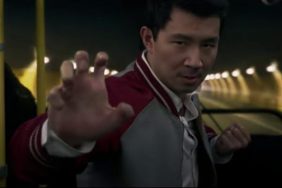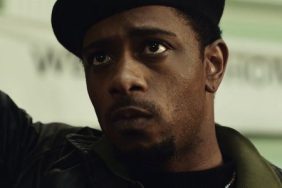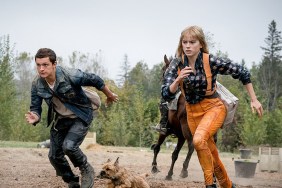
CraveOnline: There’s a nice surprise at the end of The Grandmaster, some bonus fights in the credits.
Wong Kar Wai: Right.
Where do those come from? Were they in the film and then taken out?
Yes, because we thought it would be interesting at the end to give a surprise to the audience. I especially like the line, “What’s your style?” It’s a classic line from Bruce Lee.
Are we going to see those sequences extended or recut into the film on the DVD?
No.
That’s it?
Yes.
Was there any comparison between doing The Grandmaster and Ashes of Time?
Actually, they are quite different genres. Ashes of Time belongs to the genre called wuxia pian. It involves swords. To give you an example, it’s more like Lord of the Rings, fantasy with no historical background. The Grandmaster is something different. It’s a hardcore kung fu film based on the real figures and has an exact historical background. It’s different. There’s no flying. There’s nothing against gravity. All the action had to be done by the actors themselves.
Zhang Ziyi has done a number of martial arts films. Did she have to retrain for The Grandmaster?
Yeah, because she has a background of Chinese dance so it’s much easier for her to handle the technique, but too bad she has to learn a technique which is a very tricky move, it’s always working in circles. The movement is much bigger than Yip Man which is very straightforward, always in a straight line. So she went through very, very hard training to be able to perform.
Was it important to you to show a young Bruce Lee at the end of the film?
I thought that would be interesting because the reason I wanted to make this film and to tell the story of the grandmaster Yip Man is I believe many people follow kung fu films or Chinese martial arts because of Bruce Lee. And because of that, there are so many kung fu films around. Sometimes they misinterpret or misunderstand Chinese martial arts and they become chop suey. I wanted to give another perspective into kung fu and it would be interesting to tell the story through the man who trained Bruce Lee, and I think that’s the connection.
There are some sequences in the U.S. version where there is text on the screen explaining some of the history. Does that bridge scenes that were removed for the U.S.?
Because it’s very hard to explain to the U.S. audience especially about the background and history and what exactly is the situations, so I thought it would be more effective to use these captions to tell the audience. So they don’t have to be distracted, they can focus on the story.
Did you have to take some scenes out then to put those captions in?
Yeah, but I also added some scenes in.
You have a way of doing slow motion that looks like nothing I’ve ever seen except Wong Kar Wai films. What is that kind of slow motion you do?
That’s what we call stop-printing. It’s basically you shot the image in 12 frames per second or even eight frames, and you double print it so you will have that effect.
Why do you like that technique?
Because normally in slow motion, when you use slow motion you want to extend the movement so the audience can see clearly what’s happening. With stop-printing, it’s a way to carry the speed of it because everything is so blurred when they are moving. The only image that remains sharp is the one that’s steady.
What are your favorite kung fu movies?
Grandmaster.
Good call. Any others?
Well, I’m also a big fan of Lau Kar-leung’s films.
Fred Topel is a staff writer at CraveOnline and the man behind Shelf Space Weekly. Follow him on Twitter at @FredTopel.








